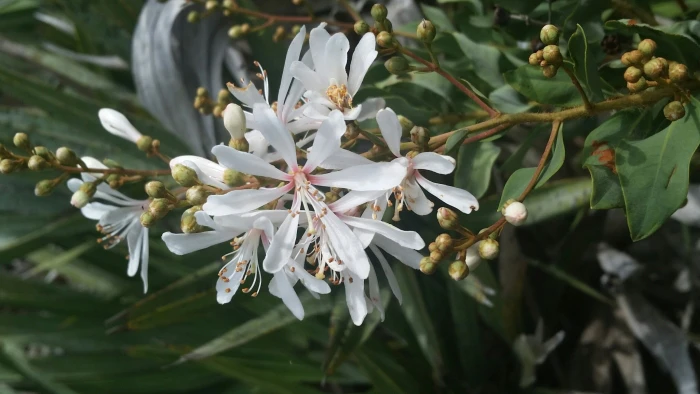Tarflower
(Bejaria racemosa)
Tarflower (Bejaria racemosa)
/
/

Jay Horn
CC BY 4.0
Image By:
Jay Horn
Recorded By:
Copyright:
CC BY 4.0
Copyright Notice:
Photo by: Jay Horn | License Type: CC BY 4.0 | License URL: http://creativecommons.org/licenses/by/4.0/ | Rights Holder: Jay Horn | Publisher: iNaturalist | Date Created: 2020-05-18T13:08:30-07:00 |

















































Estimated Native Range
Climate Requirements for Faisalabad, Pakistan
| This Plant | Your Site | Plant Suitability for Your Location | ||
|---|---|---|---|---|
| • Precipitation | 17" - 70" | 14" | Your precipitation may be insufficient for this plant. Irrigate N" / year. | Irrigate N" / year |
| • High Temp. | 68°F - 93°F | 105°F | Your summers may be too hot for this plant. | Too hot |
| • Low Temp. | 8°F - 59°F | 42°F | Your winter temperatures are normal for this plant | Excellent |
This plant should grow well at your location with about N inches per year (Y minutes per month) of irrigation.
Summary
Bejaria racemosa, commonly known as Tarflower, is an evergreen shrub native to the sandy pine flatwoods, scrubby flatwoods, and dry prairies of the Southeastern United States, particularly Florida. It typically grows to a height of 6-8 feet (1.8-2.4 meters) and a width of 4-6 feet (1.2-1.8 meters), with a rounded form. The Tarflower is notable for its sticky, resinous flowers that are pink to white in color, blooming profusely from late spring to early fall. These flowers are quite showy and attract a variety of pollinators, including bees. The plant’s leaves are glossy and leathery, adding to its ornamental value.
Tarflower is valued for its drought tolerance and its ability to thrive in nutrient-poor, acidic soils typical of its native habitat. It is used in native plant gardens, as a specimen plant, or in naturalized areas where its low maintenance and adaptability are beneficial. While it prefers full sun to part shade, it requires well-drained soils and is tolerant of dry conditions once established. There are no widely popular garden cultivars, but the species itself is appreciated for its natural beauty and resilience. Potential problems include leaf spot and rust, though these are not typically severe. Gardeners should be aware that the sticky flowers can trap small insects, which is a unique ecological adaptation but might be considered a nuisance in some settings.CC BY-SA 4.0
Tarflower is valued for its drought tolerance and its ability to thrive in nutrient-poor, acidic soils typical of its native habitat. It is used in native plant gardens, as a specimen plant, or in naturalized areas where its low maintenance and adaptability are beneficial. While it prefers full sun to part shade, it requires well-drained soils and is tolerant of dry conditions once established. There are no widely popular garden cultivars, but the species itself is appreciated for its natural beauty and resilience. Potential problems include leaf spot and rust, though these are not typically severe. Gardeners should be aware that the sticky flowers can trap small insects, which is a unique ecological adaptation but might be considered a nuisance in some settings.CC BY-SA 4.0
Plant Description
- Plant Type: Shrub
- Height: 6-8 feet
- Width: 4-6 feet
- Growth Rate: Moderate
- Flower Color: Pink, White
- Flowering Season: Spring, Summer, Fall
- Leaf Retention: Evergreen
Growth Requirements
- Sun: Full Sun, Part Shade
- Water: Low, Medium
- Drainage: Fast
Common Uses
Bird Garden, Butterfly Garden, Hummingbird Garden, Low Maintenance, Showy Flowers
Natural Habitat
Sandy pine flatwoods, scrubby flatwoods, and dry prairies of the Southeastern United States, particularly Florida
Other Names
Common Names: Flyweed
Scientific Names: Bejaria racemosa, Befaria racemosa, Bejaria floridana, Bejaria paniculata
GBIF Accepted Name: Bejaria racemosa Vent.